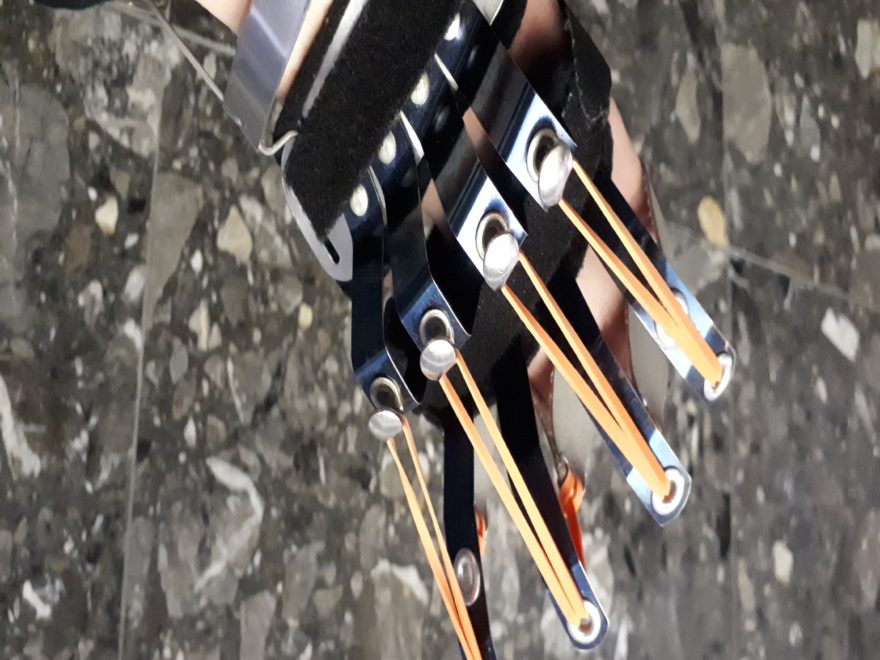It’s that time of year again, now that Halloween is over. Today is CRPS Awareness Day, also called CRPS Orange Day or Orange Day for CRPS, because the colour of this rare disease is… orange. Why orange? Because one of the most common symptoms of Complex Regional Pain Syndrome (CRPS) is a feeling that the affected area is literally on fire.
I say the “most common symptom” of CRPS, because this disease carries with it a long list of very different types of symptoms. One scientific journal makes a statement about CRPS that I absolutely adore – because it’s almost incomprehensible to anyone who isn’t already familiar with this condition! That quotation is that CRPS can combine:
maladaptive pro-inflammatory response and disturbances in sympathetically-mediated vasomotor control, together with maladaptive peripheral and central neuronal plasticity” (1)
So what exactly does that all mean? That’s a fantastic question! I’ll unpack that sentence into four different sections to explain what these researchers mean:
- The “maladaptive pro-inflammatory response” part means that CRPS messes up the body’s inflammatory system, because it’s an autoimmune disease; in my case, that means immune-system symptoms like full-body fatigue;
- What “disturbances in sympathetically-mediated vasomotor control” means is that this condition causes uncontrolled movements, like spasms and twitching, in the affected areas; for example I often have spasms and twitching in my right hand and arm;
- When we get to “maladaptive peripheral… neuronal plasticity”, that’s referring to the peripheral nervous system; how the nerves in our arms and legs work. “Maladaptive” basically means that something doesn’t work properly, so in CRPS we see a variety of truly wicked neuropathic pain symptoms; for me, that can include feeling as though my right hand and arm are on fire, or freezing (with skin colour and skin temperature changes, too!), or being stabbed, electrocuted, and more. Oh, and horrific bone and joint pain as well – and a sometimes unbearable skin sensitivity to touch or even a breeze, or my own breathing on my skin;
- The word “maladaptive” returns for “central neuronal plasticity”, this means that it’s the body’s main – or “central” – nervous system that isn’t working properly. One disabling result of this can be (permanent) cognitive impairment (2); this is what happened to me in 2018, which is how CRPS stole my beloved career bioethics or biomedical ethics.
The last three of these, numbers 2, 3, and 4 , are all related to the fact that CRPS is a neuro-inflammatory disease in addition to being an autoimmune condition. We don’t know yet what causes it, why some people get it but not others, and even whether there are any genetic markers or inheritances of Complex Regional Pain Syndrome. We also lack good treatment options.
But there is some hopeful news about CRPS, which is that if it’s diagnosed and treated quickly – within three months of the first symptom – it can sometimes resolve or go away. That’s why I raise awareness of CRPS, in the hopes that other people with these bizarre symptoms can receive a faster diagnosis than I did – and to get treatment sooner.
As always, thanks so much for stopping by! Stay tuned for information about Canada’s National Pain Awareness Week, starting next week, and feel free to reach out over on Instagram or Twitter as I’ve had to disable the Comments section of the blog; it’s too much for me to handle now, with my mild cognitive impairment. Keep safe, and stay well!
References
(1) Smart KM, Wand BM, O’Connell NE. Physiotherapy for pain and disability in adults with complex regional pain syndrome (CRPS) types I and II. Cochrane Database of Systematic Reviews 2016, Issue 2. Art. No.: CD010853. DOI: 10.1002/14651858.CD010853.pub2. Accessed 01 November 2021:
https://www.cochranelibrary.com/cdsr/doi/10.1002/14651858.CD010853.pub2/information#CD010853-cr-0002
(2) Clinical features and pathophysiology of complex regional pain syndrome. (Review Article.) Johan Marinus, G Lorimer Moseley, Frank Birklein, Ralf Baron, Christian Maihöfner, Wade S Kingery, et al. The Lancet Neurology. 2011(10):7; 637-648. 01 July 2011. doi: 10.1016/S1474-4422(11)70106-5. Online:
https://www.thelancet.com/journals/laneur/article/PIIS1474-4422(11)70106-5/fulltext#secd13577181e290

